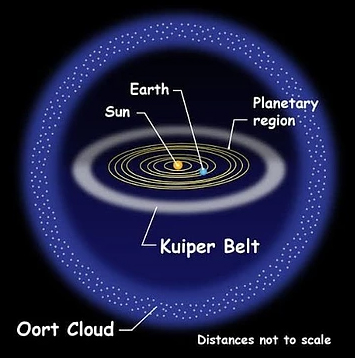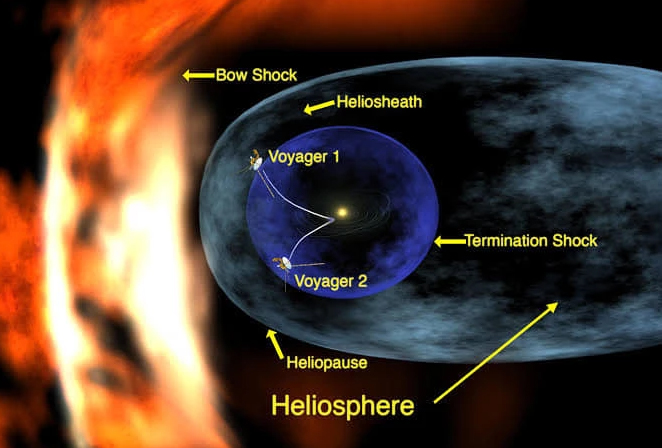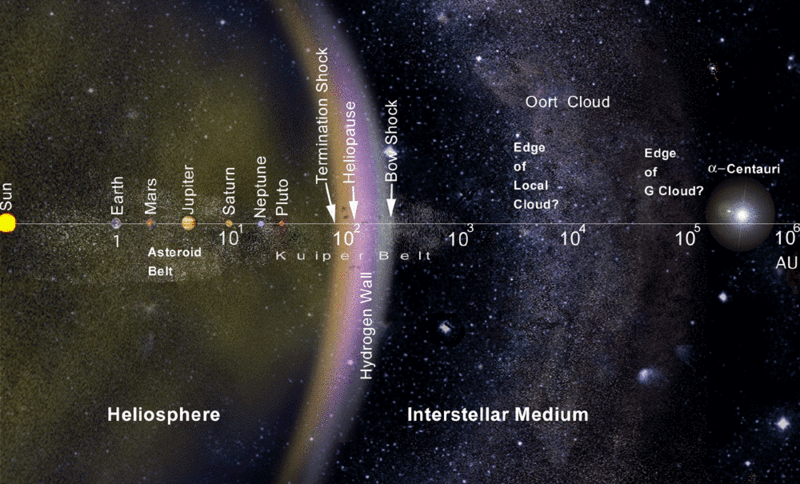For most of the people, the Solar System is just until the orbit of Neptune. Well, it is way bigger than that. There are 2 ways to tell the boundary of the Solar System :-
(1) Gravitational effect of the Sun:
Beyond the orbit of Neptune (30 AU), there is Kuiper Belt. Kuiper Belt is named after astronomer, Gerard Kuiper. The objects lying outside the orbit of Neptune are called Trans-Neptunian Objects [TNOs]. The Belt starts from 30 AU and ends at 50 AU from sun. Beyond Kuiper Belt, there is Scattered Disk which continues till 1000 AU from sun. The Bodies found in this region are made up of methane, ammonia and water. Notable Objects :- Pluto, Eris, Haumea, Makemake, etc. Many of the Dwarf Planets are located here.
The Oort Cloud is the Shell that surrounds the Solar System. The Oort Cloud is named after Astronomer, Jan Oort. The inner edge starts from 2000 to 5000 AU and the outer edge is about 10,000 to 100,000 AU from the Sun. Oort Cloud is a Spherical Shell that is made up of Icy Pieces of Space Debris.

(2) By Solar Radiation:
The Solar Wind released by the sun creates a Sphere that surrounds the solar system which is known as Heliosphere. The Solar Winds are released at a very high speed (supersonic), pushing the Interstellar medium. Due to this Interstellar Medium, the speed of Solar winds get slower and slower. One point comes when the speed of the Radiation is Slower than the Speed of Sound (subsonic). This point is called Termination Shock.
The Solar Wind begins to interact with the Interstellar Medium to regulate the Pressure on the Both Sides. The point where the pressure is equal on both sides, is called Heliopause. This marks the end of the Solar System (in terms of Solar Radiation).


